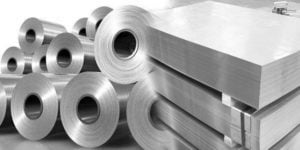Trump’s campaign includes a protectionist position on imported steel in order to increase business for domestic steelmakers. This, in addition to the trade cases against steel dumped in the U.S. in the last year, has and will continue to impact U.S. steel mill prices, which may create financial issues for steel consumers and businesses that use steel to make their own products.
Over the last two years, the Dow Jones U.S. Iron & Steel Index has risen to its highest levels with the biggest spike occurring after the election from 208.24 on election day to 278.81 one month later.
Under the Trump administration, steel prices are expected to continue to rise. The inventory destocking activity of the steel industry in the last two years lowered supply, while the proposed increase in domestic infrastructure spending in the U.S. will lead to an increase in demand. Reduced supply and increased demand will give U.S. mills the power to raise steel prices.
If this trend continues sheet metal fabricators and contractors will have to pay more for coil and sheet material used to make ducts, as well as other sheet components related to duct fabrication, such as fasteners, tie rods, and corner keys.
Most of these market forces are out of our control, but, in part two, we look at options we can control to offset these increased material costs such as increasing productivity, and reducing labor costs.


